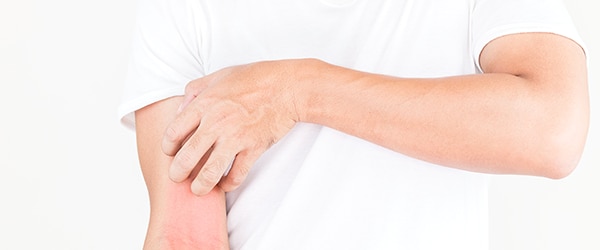Who is affected by contact eczema?
Allergic contact eczema is often described as adult eczema, as opposed to atopic eczema, which primarily affects children. But it's not that simple! Both contact eczema and atopic eczema can affect both adults and children. The two types of eczema are sometimes associated: a person with atopic dermatitis is more at risk of developing contact eczema because their skin is already weakened and fails in its role as a protective barrier.
The allergens involved in contact eczema are varied: metals, fragrances, medications applied to the skin, etc. Contact eczema to this or that substance is detected during allergy tests called "patch tests".
The allergens involved in contact eczema are varied: metals, fragrances, medications applied to the skin, etc. Contact eczema to this or that substance is detected during allergy tests called "patch tests".
What parts of the body are affected by contact eczema?
All parts of the body can be affected by contact eczema.
Hand contact eczema is one of the most common forms of eczema because the hands are involved in most of our daily activities and are therefore more at risk of encountering allergens.
Face contact eczema is also possible, for example following the application of a cosmetic product.
Hand contact eczema is one of the most common forms of eczema because the hands are involved in most of our daily activities and are therefore more at risk of encountering allergens.
Face contact eczema is also possible, for example following the application of a cosmetic product.
Managing contact eczema
The treatment of contact eczema is based on the application of cortisone creams to relieve inflammation until the plaques disappear and the use of emollients to repair the skin. To avoid new flare-ups of contact eczema, it is essential to avoid further contact with the allergen. Once the allergen has been identified in the workplace, it is sometimes necessary to adapt your work station or even change professions.

